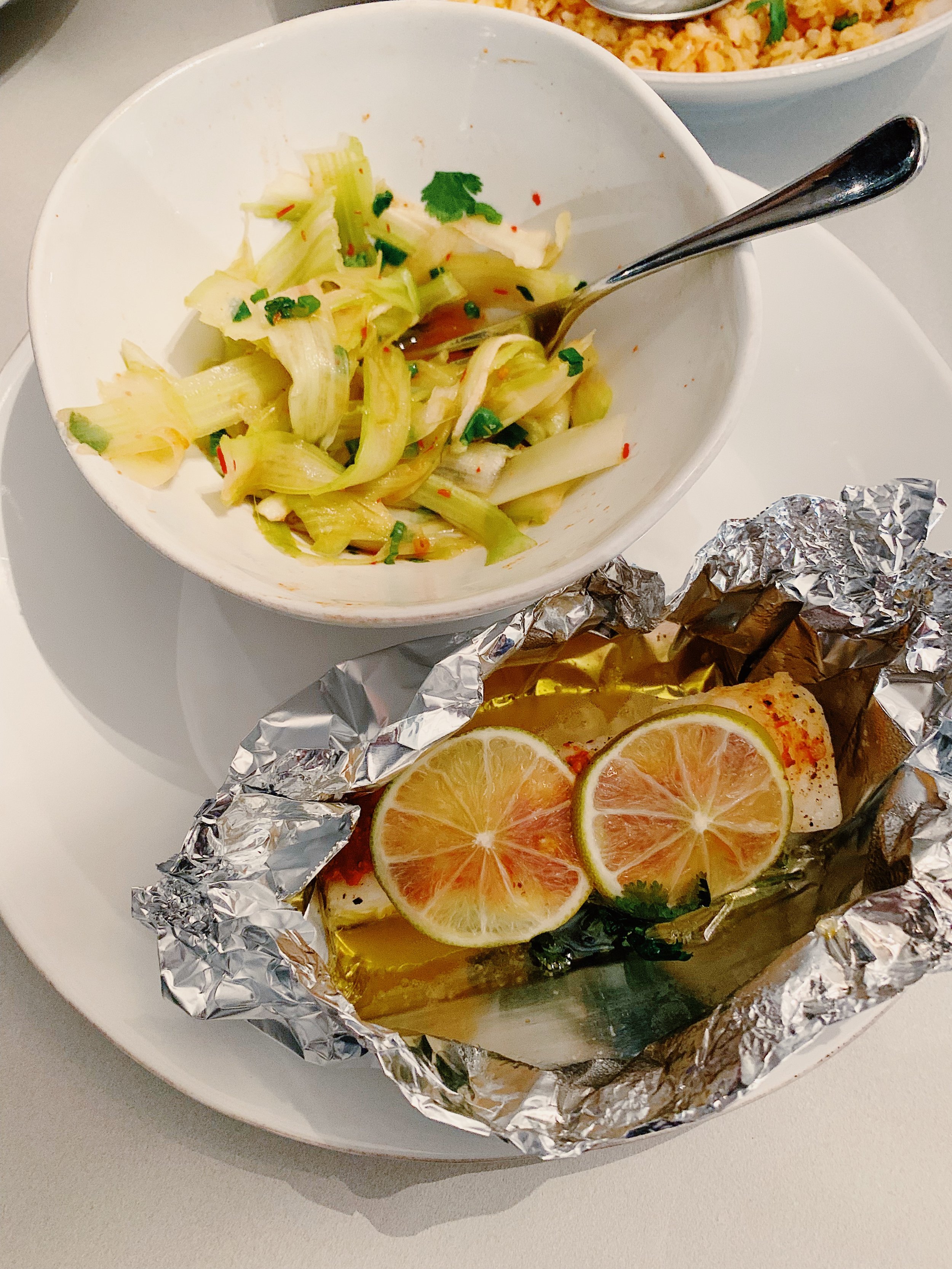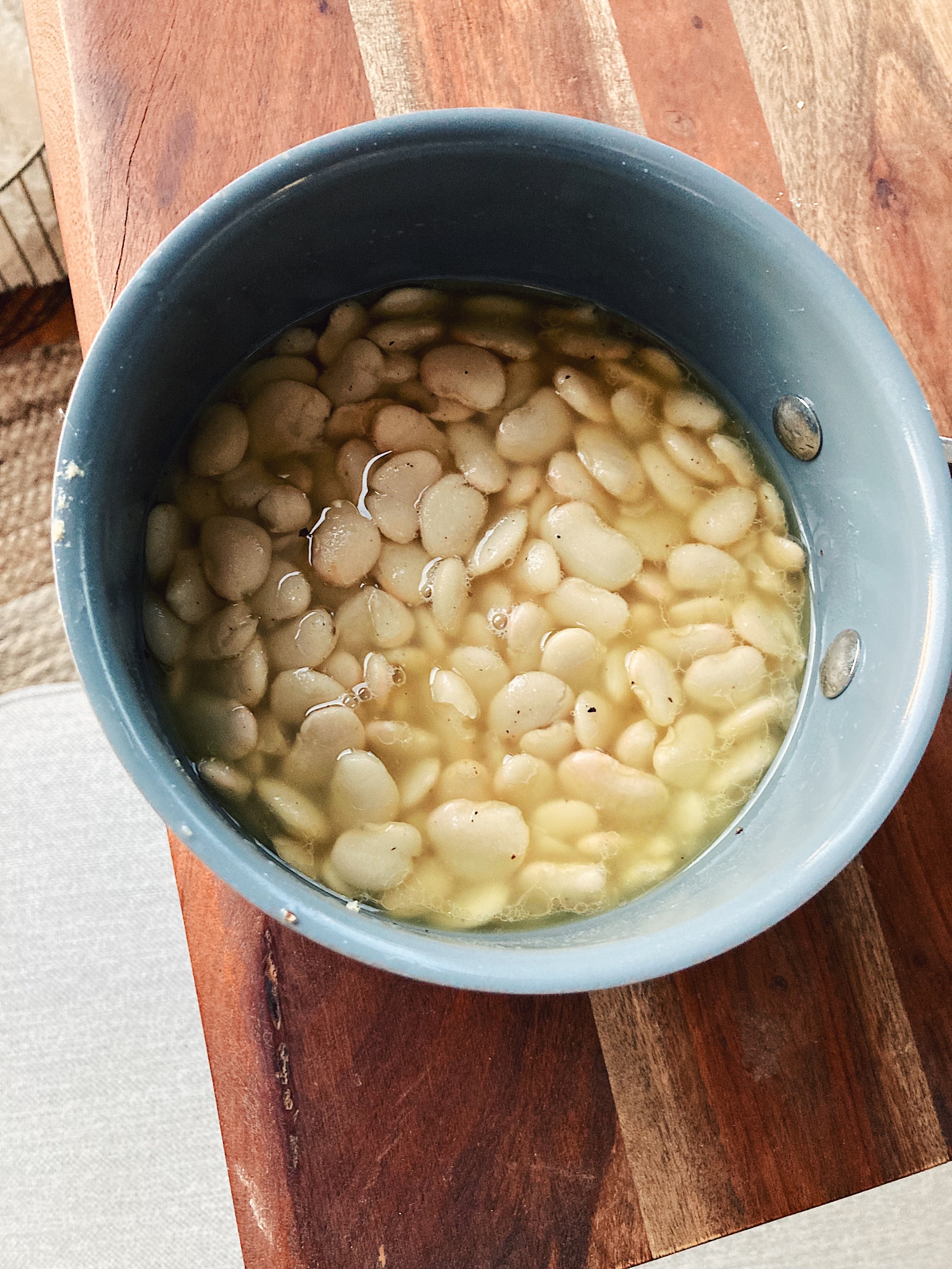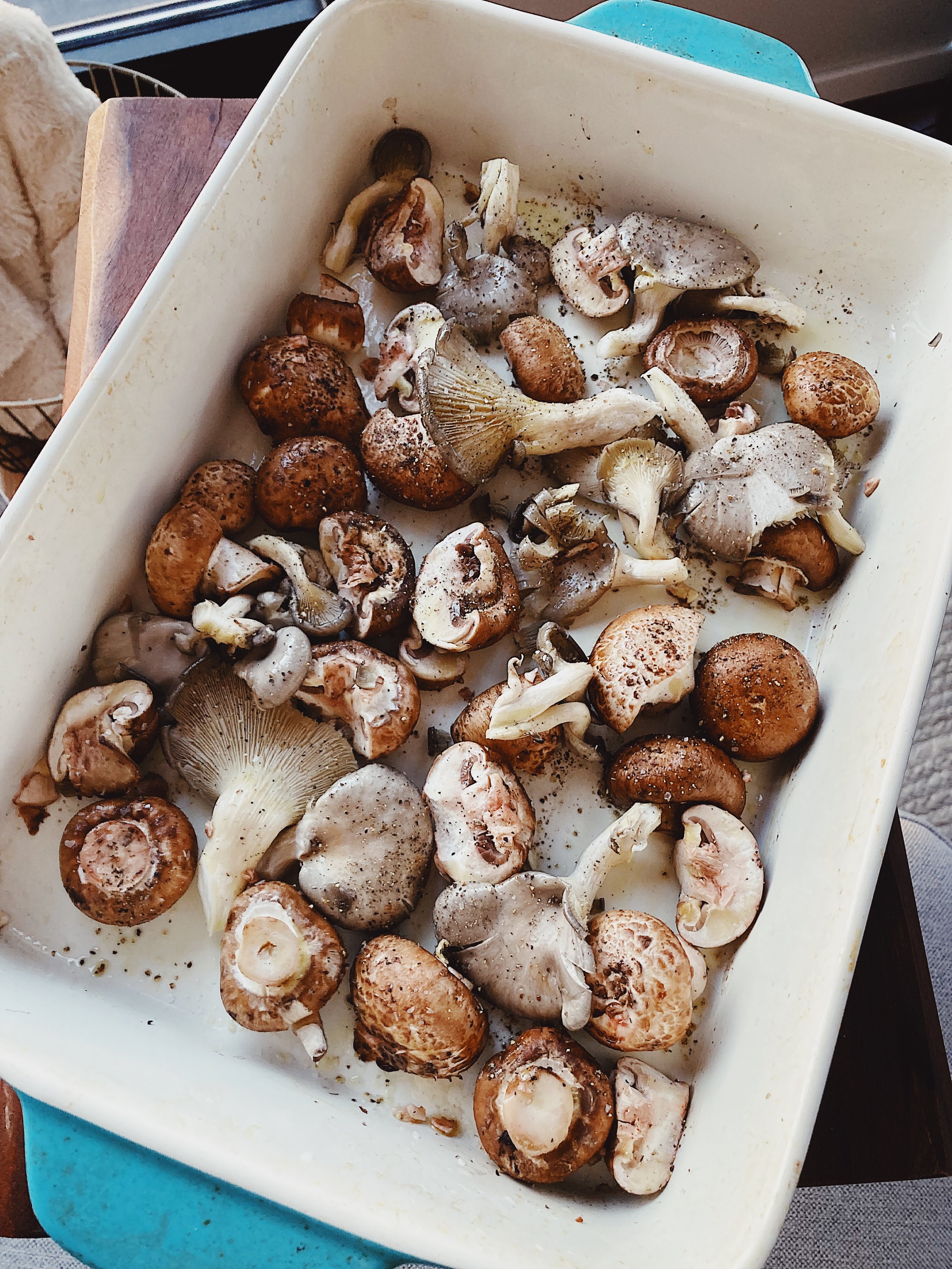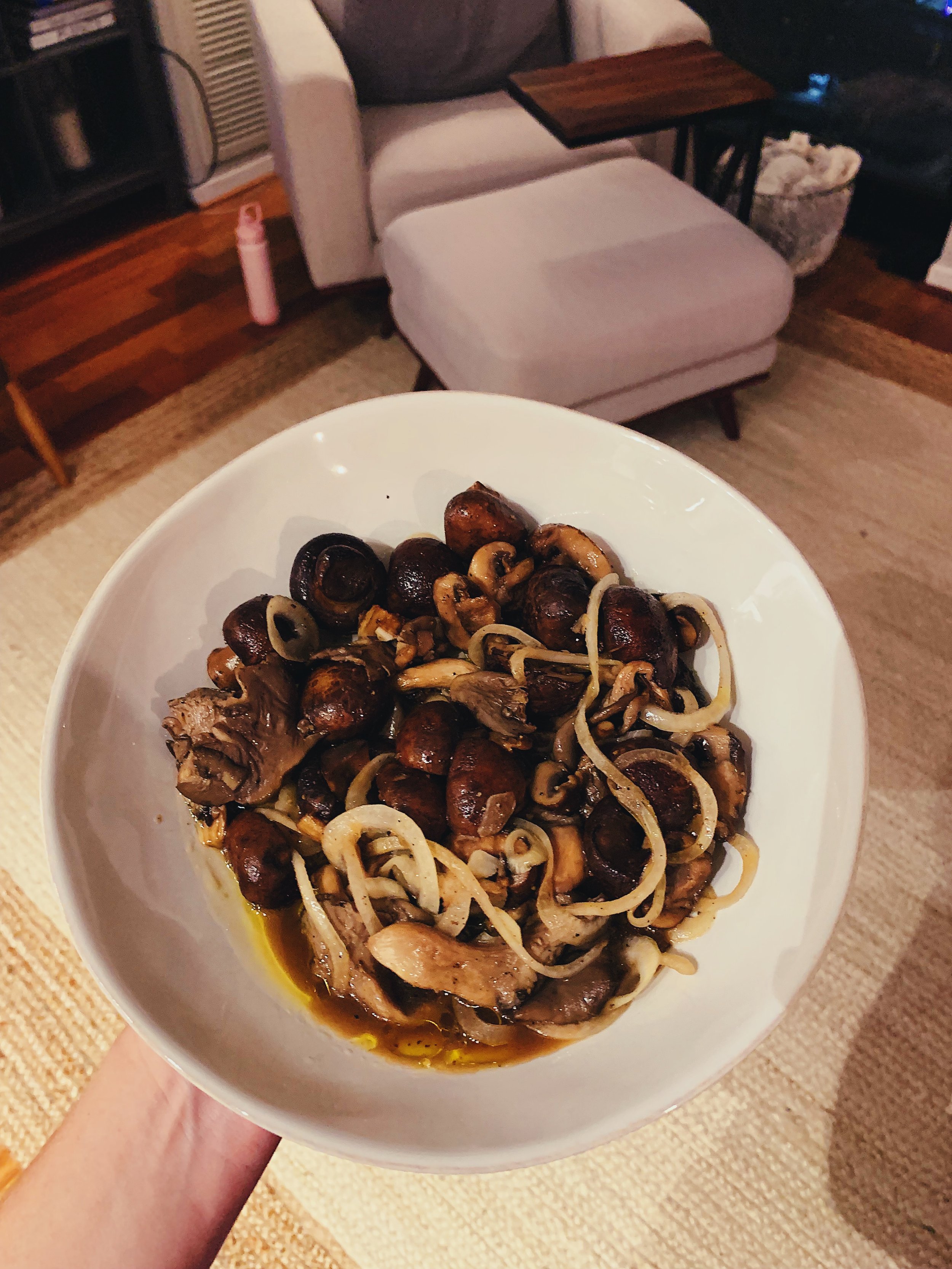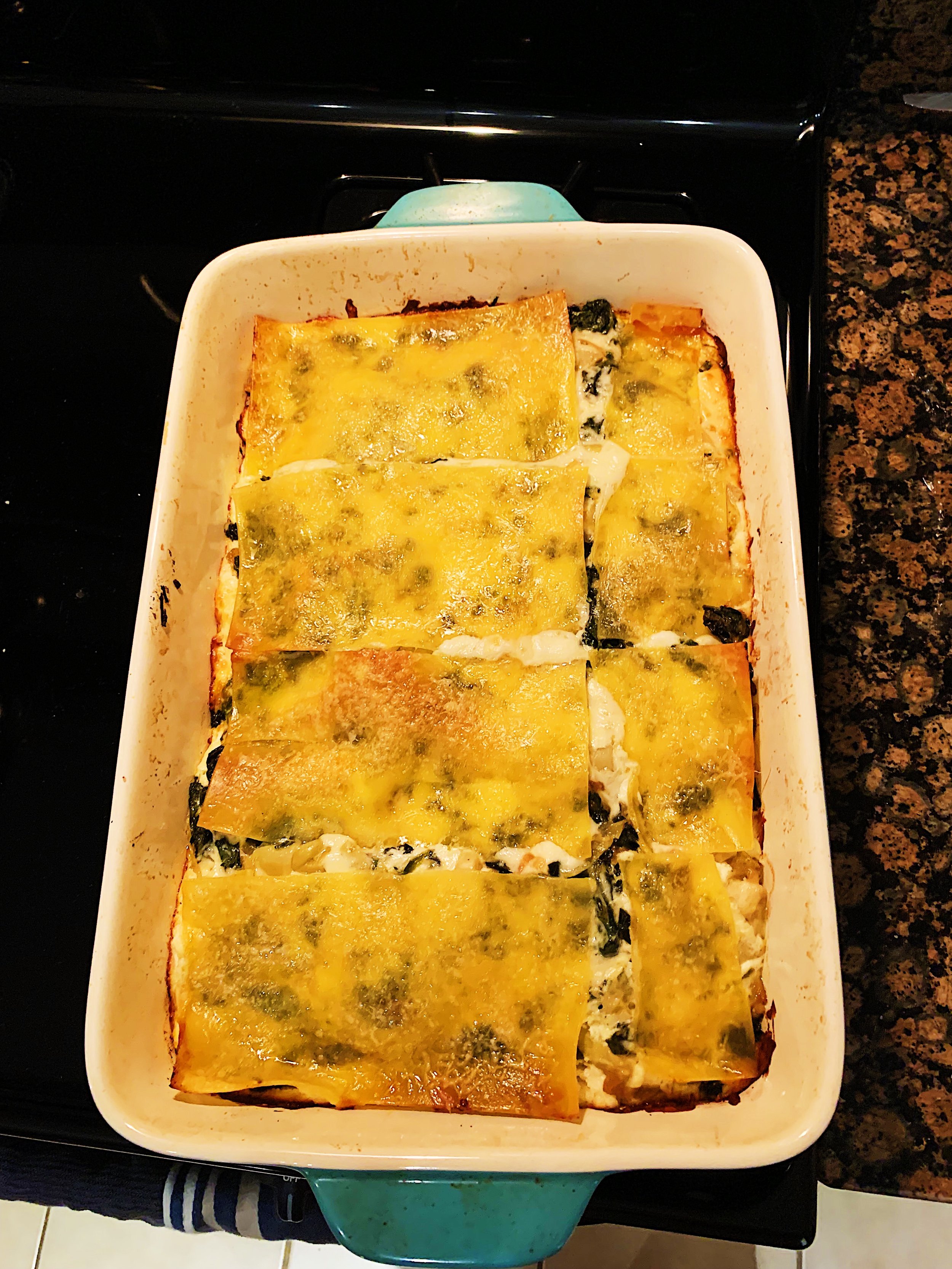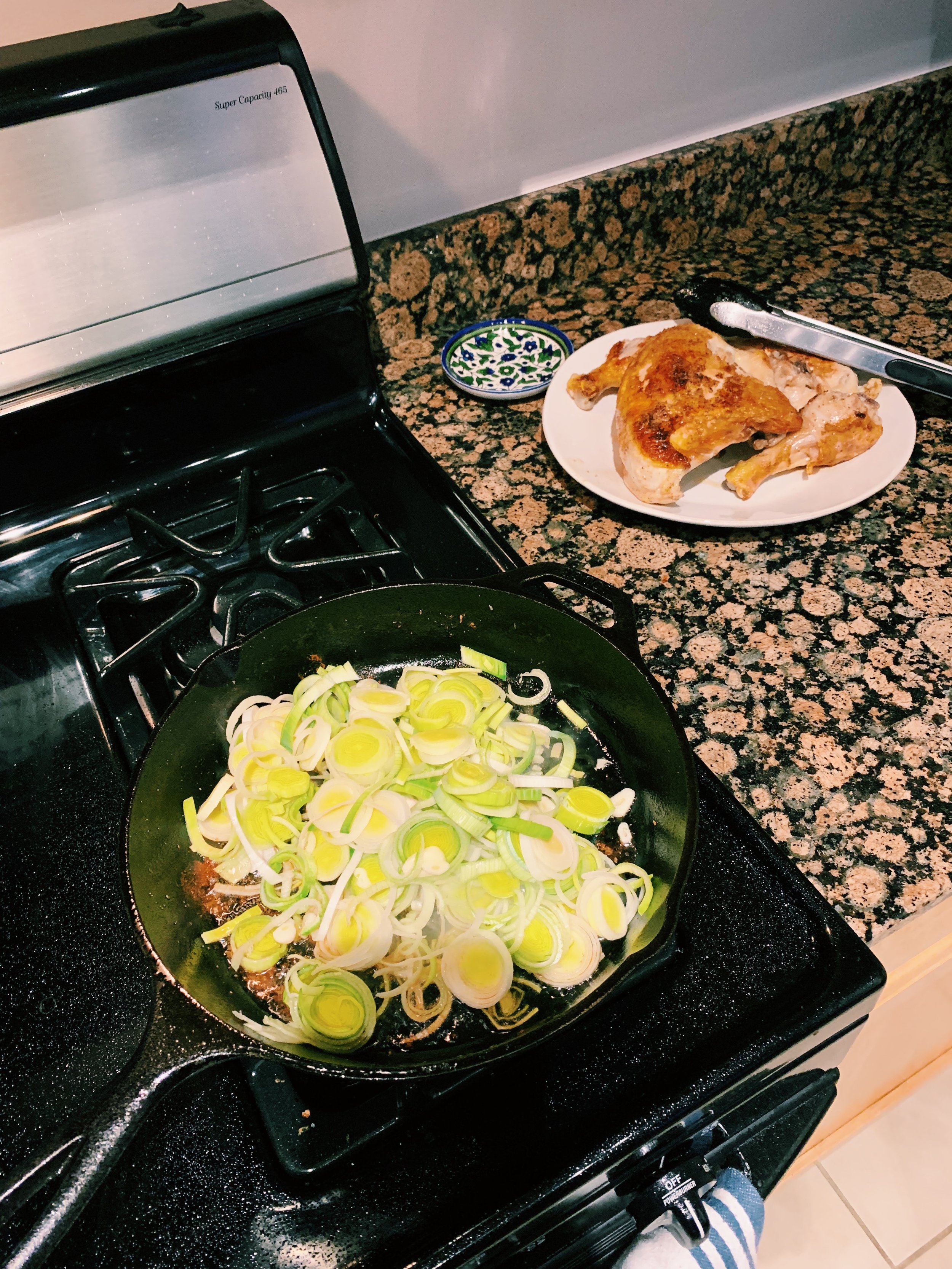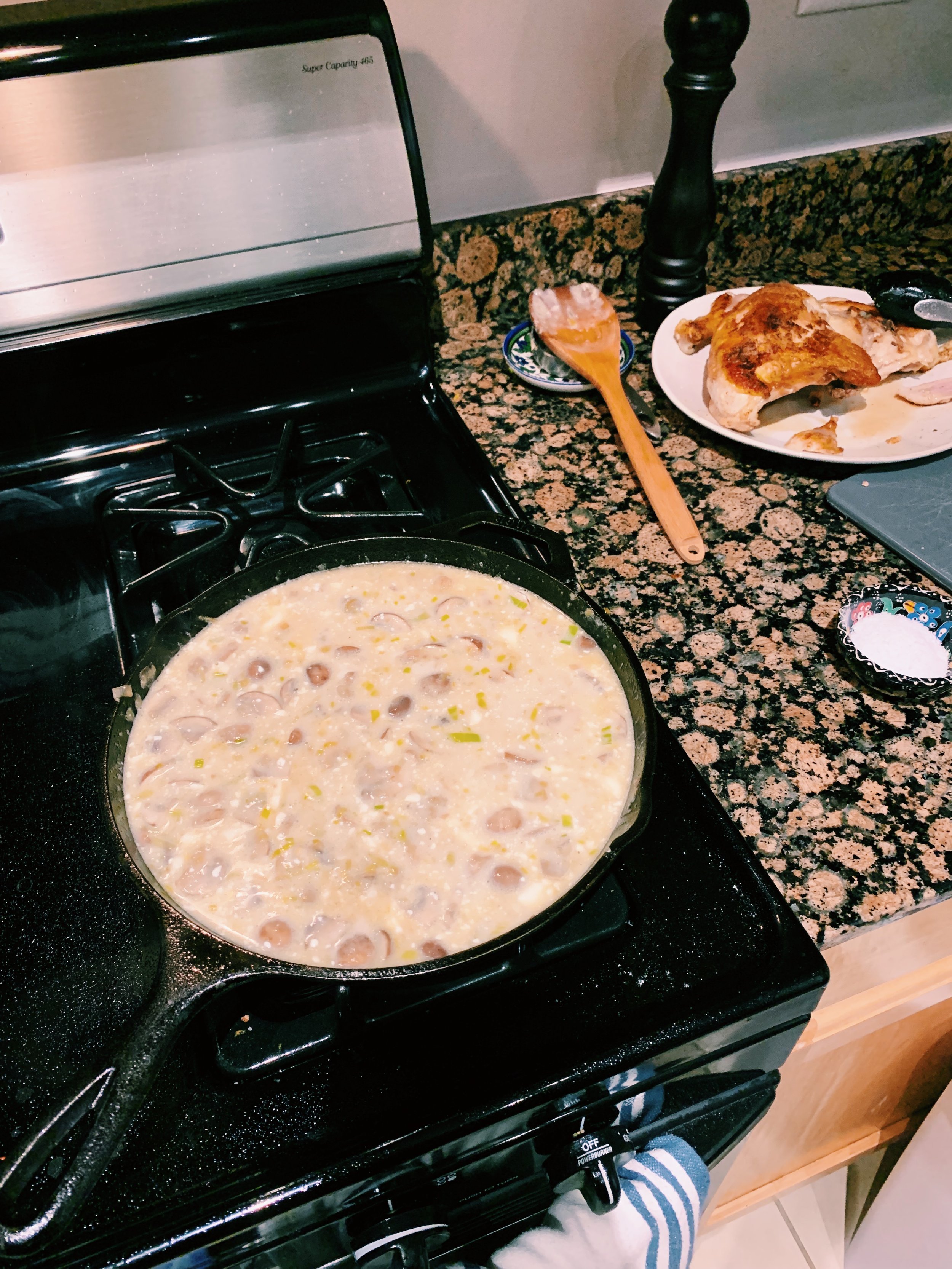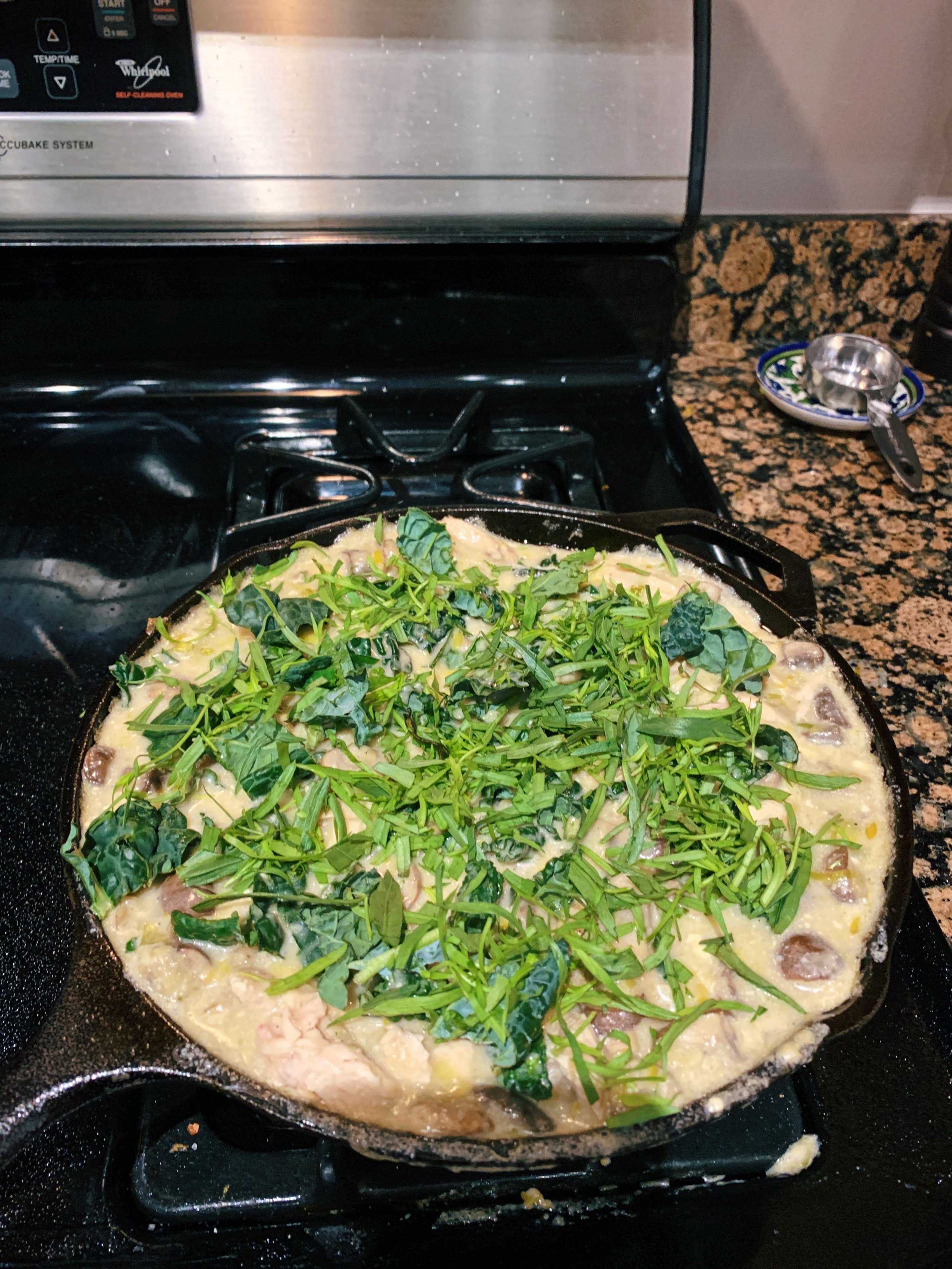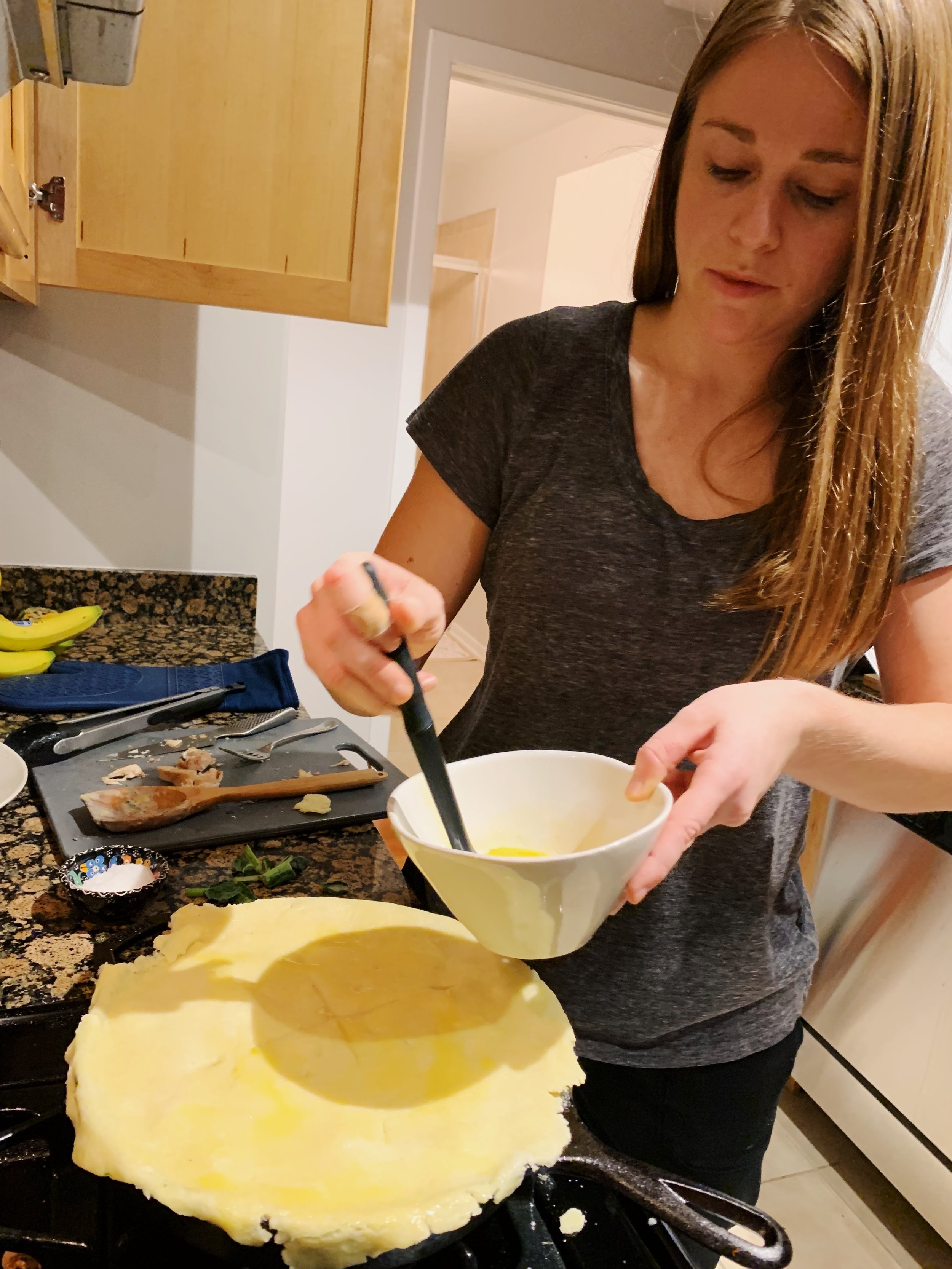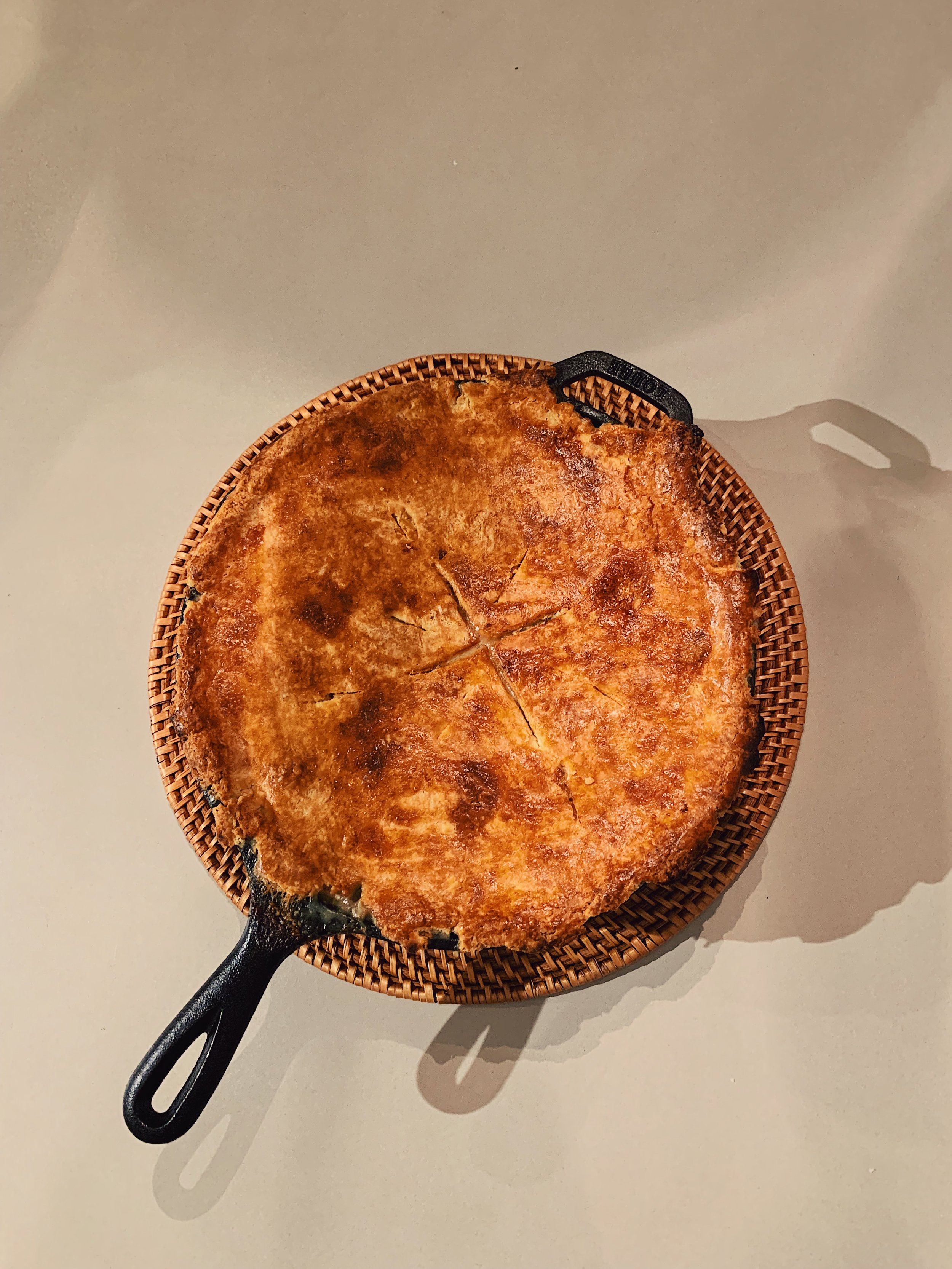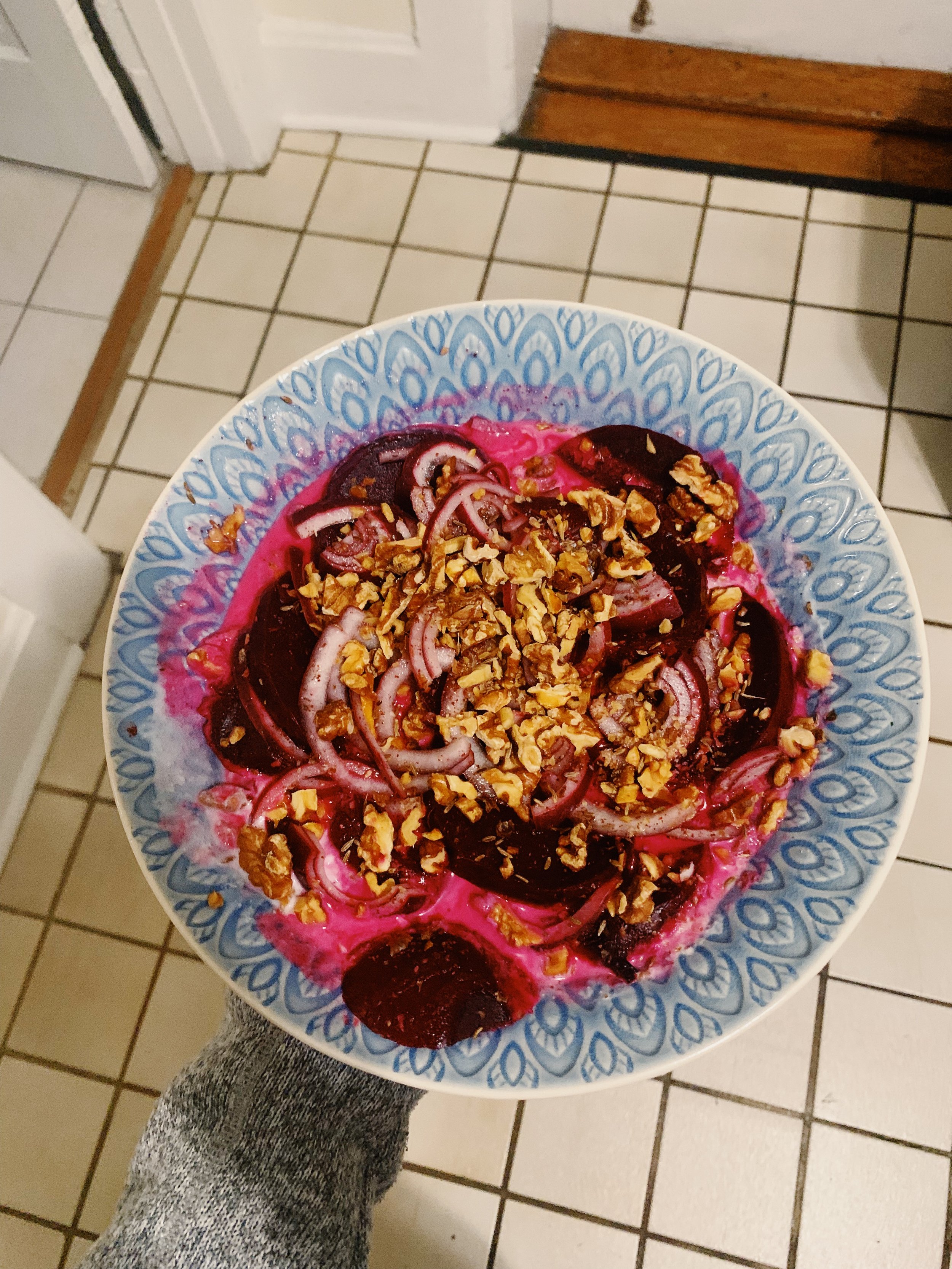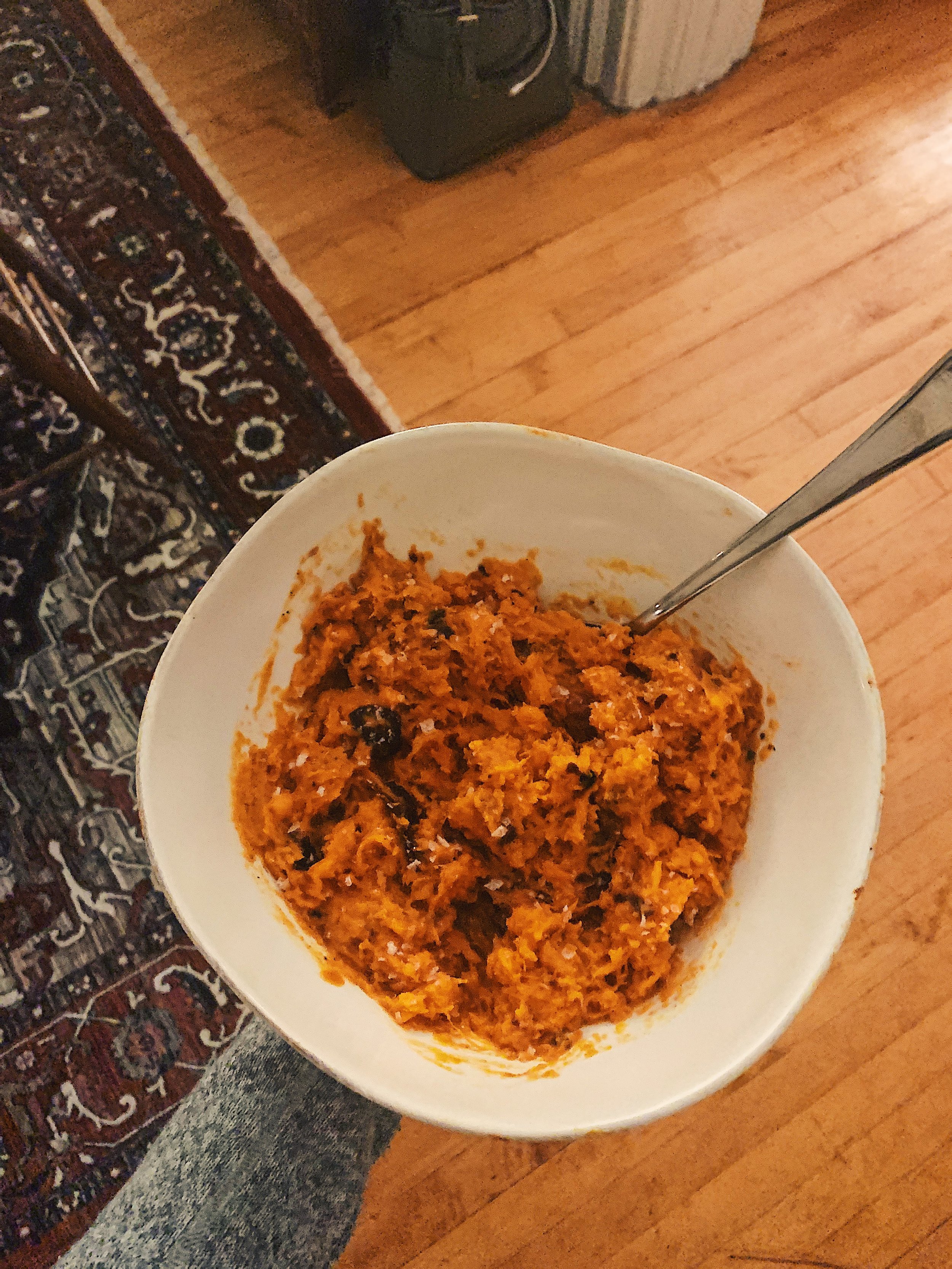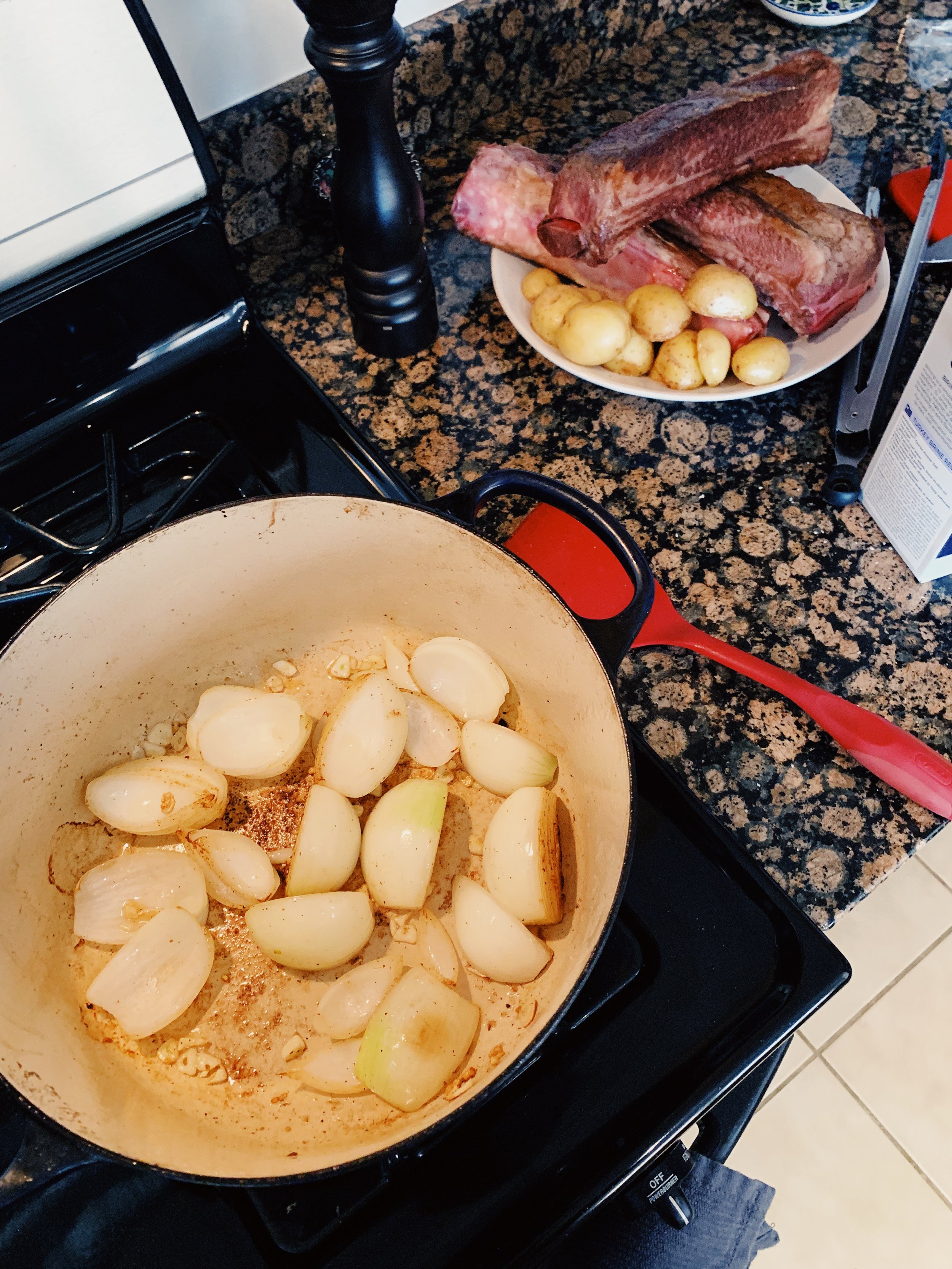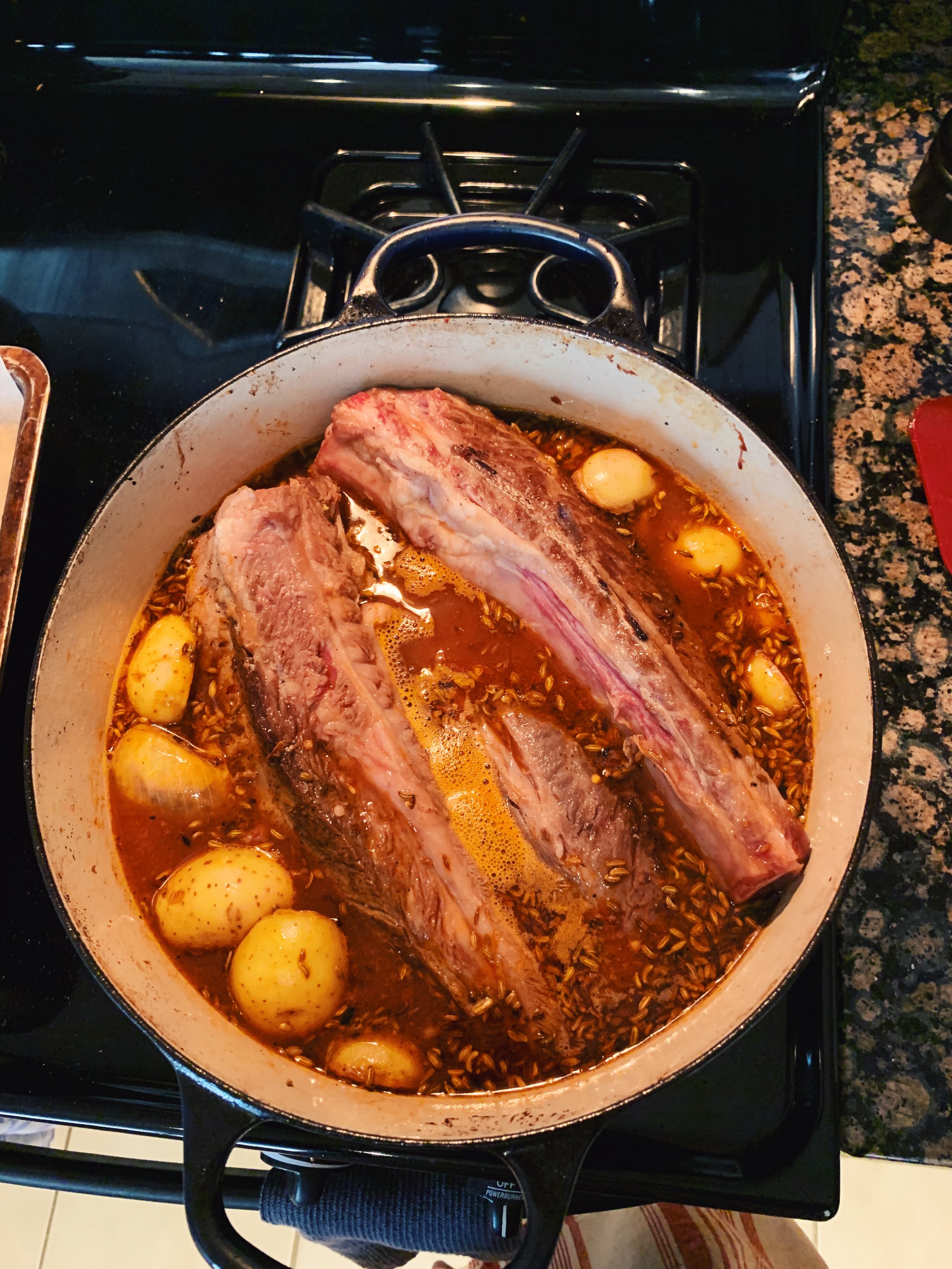Besides all of Alison’s salmon recipes, her black bass recipe is Jordan’s favorite seafood dish from this project, by a long shot. Reasons being threefold: tenderness, flavor, and ease.
Tenderness: Alison instructs us to cook the fish filets in a foil packet with lots of olive oil, which allows for plenty of fatty steam to cook the fish through without letting it dry out. I’m a big parchment/foil packet fan when it comes to making fish. So quick, easy, and practically foolproof.
Flavor: This recipe includes an X factor ingredient – lime pickle. An indian condiment made of pickled lime. I confess that I didn’t use it here. I searched, but could not find it. So I improvised, and used a combination of salt, lime juice, and harissa to resemble the flavor. And though I can’t officially confirm how similar the flavors are, I personally loved how it turned out! The spicy, saltiness of my spices paired well with the fishiness of the bass, while not drowning out the fish’s flavor altogether. I used this combination with the celery and scallion salad too, and *chef’s kiss* my pals. What a fresh, fun, kick of a dish!
Ease: The entire recipe took about 10 minutes of prep and 15 minutes in the oven. Half of the prep happened while the fish was in the oven. I also included a packet of frozen brown rice from TJ’s, mixed with a bit of harissa and sea salt to complete the dish.
I will certainly make this one again. And then, probably, again.
174 recipes cooked, 51 to go.




